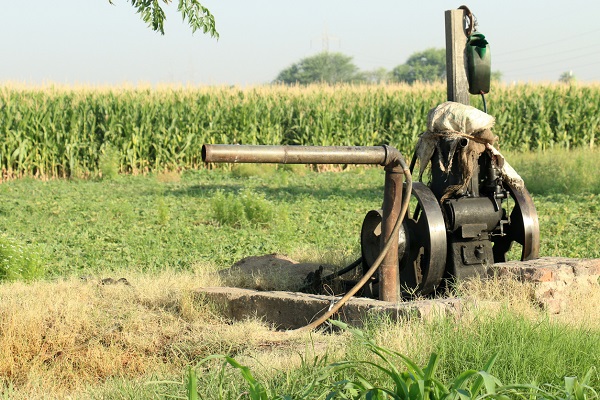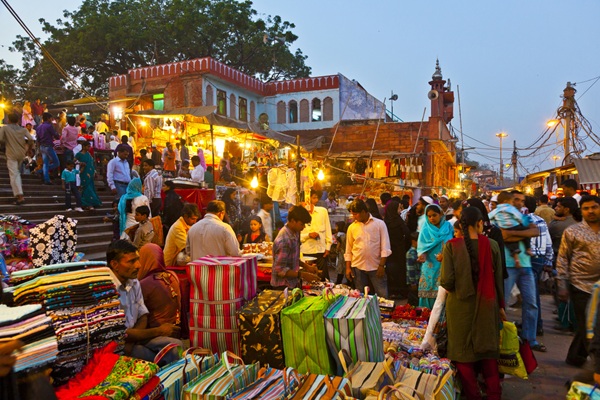.png)

Batabyal is a Distinguished Professor of economics and the Head of the Sustainability Department at the Rochester Institute of Technology, NY. His research interests span environmental, trade, and development economics.
August 22, 2025 at 6:53 AM IST
India, Pakistan, Bangladesh, and Nepal are the world’s largest users of groundwater. Groundwater use here is vital for agricultural growth, food security, and rural livelihoods, particularly for smallholder farmers who dominate agriculture. However, widespread subsidies on energy, diesel and electricity, and the absence of direct pricing for water have created what recent research calls a conundrum.
Put differently, these subsidies make irrigation affordable for poor farmers, but they also encourage the excessive removal of groundwater, thereby causing financial stress on utilities and long-term threats to sustainability.
South Asian agriculture is heavily dependent on smallholders, with average farm sizes below three hectares. Millions of tube wells, mostly privately owned, supply irrigation water. Farmers without wells often buy water from others in informal groundwater markets.
Groundwater itself is not priced, but pumping requires energy, which is heavily subsidised.
Pricing structures in the region vary widely. Electricity may be free, it may be charged using a flat rate, or it may be metered by area, hours, or kilowatt usage. Diesel costs are borne directly by farmers. Few tube wells are metered—only about a quarter in India and even fewer elsewhere.
These arrangements, though beneficial to farmers in the short term, reduce irrigation efficiency and deplete aquifers, especially in the Indo-Gangetic plains. Energy subsidies also impose heavy fiscal burdens. For instance, Punjab and Haryana in India devote large shares of their state subsidies to agricultural electricity.
Groundwater use in South Asia today is unsustainable and this raises an important question: How do we design policy to make groundwater use sustainable? Let us investigate.
Policy Challenge
Introducing water pricing or reducing subsidies can improve efficiency and fiscal sustainability, but such reforms face serious challenges. This is because agriculture in this region remains a major employer, disproportionately of the rural poor and women.
Smaller farms, limited mechanisation, and the reliance on groundwater mean that higher input costs will depress farm incomes, raise food prices, and worsen rural poverty. Policymakers thus face clear trade-offs between the notions of equity and efficiency.
Broadly speaking, policies designed to make groundwater use sustainable can be divided into direct and indirect approaches.
Direct pricing is an example of a direct approach.
This involves either charging farmers directly for water, requiring widespread metering of wells, or reducing extant energy subsidies. Possible methods here include volumetric pricing, license fees, or charges linked to crop area or to fertiliser use.
Each method has drawbacks pertaining to the extent of transaction costs, the level of difficulty in enforcement, and potential regressive impacts on poorer farmers and water buyers.
In contrast, indirect approaches seek to alter the incentives faced by farmers without imposing direct water charges. Examples of such indirect approaches include electricity entitlement schemes, where utilities buy back the unused electricity quotas, and solar net-metering, where farmers sell excess solar power back to the grid.
Pilot programs in Gujarat and Punjab using indirect approaches have yielded mixed results. Gujarat saw no reduction in electricity use or in groundwater extraction, but Punjab achieved energy reductions of 7.5–30% without reducing yields. The general point is that we face key knowledge gaps in the design of sensible groundwater use policy and this calls out for research on certain key points.
First, we need to know more about the distributional impacts of alternative policies.
Specifically, how does pricing affect incomes, food production, rural labour, tenants, and water buyers? Second, although informal groundwater markets are important, little is known about their scale, structure, and how they interact with formal pricing or entitlement schemes. Third, there is the matter of transaction costs, which means that we need to know more about the expenses associated with implementing metering or using differentiated tariffs. Finally, we need to have a much better understanding of the impacts of technology adoption. In other words, we need to recognise the effects of using efficiency-enhancing practices---drip irrigation, alternate wetting and drying---that can save groundwater but may lead to rebound effects if more land is cultivated.
In sum, policy needs to balance sustainability with poverty reduction. Direct groundwater pricing remains politically difficult, while indirect approaches show promise but require careful design. Better data, experimental studies, and collaboration between researchers and policymakers are essential to craft workable solutions.
Recognising the heterogeneity of farmers and regions within South Asia is critical. All this means that evidence-based policy, incorporating social objectives like food security and livelihoods, is essential for the sustainable management of South Asia’s groundwater crisis.
*Views are personal



